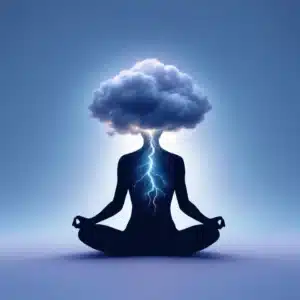Unlock Instant Stress Relief: 10 Proven Techniques to Calm Your Mind in Minutes

What if the key to unlocking your greatest potential in life is hidden within something as simple as managing your stress? Stress isn’t just a mental challenge; it’s a universal barrier to well-being and achievement. Finding effective stress relief is essential for anyone navigating life’s demands.
Managing stress is crucial for everyone. Modern life, with its constant demands, responsibilities, and fast pace, can be exhilarating yet overwhelming. The pressures of daily routines, relationships, and personal goals can easily pile up. This often leads to decreased creativity, lower productivity, fatigue, and even burnout. In this article, we will explore what stress is, its impact, and 10 proven techniques that can help you quickly reduce stress, enabling you to feel calmer and perform at your best.
Understanding Stress
Definition of Stress
Stress is a normal part of life. It is your body’s response to challenges, whether they are emotional, physical, or mental. It can manifest as a reaction to both positive and negative situations. The key is to manage stress effectively, as prolonged stress can lead to serious health issues.

Types of Stress
There are two main types of stress: acute and chronic.
- Acute Stress: This is short-term stress that is usually triggered by a specific event, such as a deadline or a presentation. It can be beneficial in small doses as it can help you perform better in a situation. However, too much acute stress can lead to negative consequences.
- Chronic Stress: This is long-term stress that continues over an extended period. It can result from ongoing challenges, such as financial issues or a demanding work schedule. Chronic stress can take a significant toll on both your mental and physical health.
Common Symptoms of Stress
Stress can show up in various ways, and recognizing the signs is the first step to managing it. Here are some common symptoms:
- Emotional Symptoms: Anxiety, irritability, and feelings of sadness or hopelessness.
- Physical Symptoms: Headaches, muscle tension, fatigue, and changes in sleep patterns.
- Cognitive Symptoms: Difficulty concentrating, forgetfulness, and racing thoughts.
The Impact of Stress on Entrepreneurs and Content Creators
How Stress Affects Creativity
Creativity is a vital component for success in both entrepreneurship and content creation. Stress can stifle your creative process, making it hard to come up with new ideas or solutions. When you are stressed, your brain may struggle to think outside the box, leading to a decrease in innovative thinking.
Stress and Productivity
While moderate stress can boost productivity, excessive stress can have the opposite effect. When you are overwhelmed, you may find it challenging to focus on tasks, leading to inefficiency and mistakes. This can create a cycle of stress, as the pressure to meet deadlines or perform well can increase.
Burnout and Its Consequences
Burnout is a state of chronic stress that leads to emotional, mental, and physical exhaustion. Entrepreneurs and content creators are particularly susceptible to burnout, given their often demanding workloads. The consequences of burnout can be severe, including decreased motivation, reduced productivity, and even mental health issues.
The Importance of Quick Stress Relief Techniques
In today’s fast-paced world, it’s essential to have quick techniques to manage stress. Instant stress relief can be a game-changer for busy entrepreneurs and content creators. It allows you to calm your mind in moments of high pressure, helping you to return to a state of focus and clarity.
Why Instant Stress Relief is Crucial
Immediate stress relief can prevent escalation and help you regain control. It’s important to have a toolkit of techniques that you can call upon in various situations, whether you’re in a meeting, preparing for a performance, or simply overwhelmed by your to-do list.

Benefits of Nimble Stress Management
- Immediate Relief: You can quickly reduce anxiety and tension, allowing you to refocus.
- Enhanced Performance: By managing stress swiftly, you can maintain high energy and productivity levels.
- Improved Mental Health: Regularly practicing stress relief techniques can lead to better long-term mental health outcomes.
10 Proven Techniques for Quick Stress Relief
Technique 1: Deep Breathing Exercises
How to Perform Deep Breathing
- Find a quiet space where you can sit or stand comfortably.
- Close your eyes and take a slow, deep breath in through your nose, allowing your abdomen to expand.
- Hold the breath for a moment, then exhale slowly through your mouth, letting your abdomen contract.
- Repeat this process a few times, focusing on your breath.
Benefits of Deep Breathing
- Reduces Anxiety: It helps to calm your nervous system.
- Lowers Blood Pressure: It can help in temporarily reducing blood pressure.
Technique 2: Progressive Muscle Relaxation
Step-by-Step Guide
- Find a quiet and comfortable spot to sit or lie down.
- Start with your toes, tensing the muscles for 5-7 seconds, then relaxing them.
- Move up your body, tensing and relaxing different muscle groups (calves, thighs, abdomen, chest, arms, and face).
- As you relax each group, focus on the contrast between tension and relaxation.
Who Can Benefit From This
- Anyone feeling physical tension from stress.
- Individuals with anxiety or sleep issues.
Technique 3: Mindfulness and Meditation
Beginner’s Guide to Mindfulness
- Sit in a comfortable position with your eyes closed.
- Focus on your breath, noticing the rise and fall of your chest.
- When thoughts arise, acknowledge them without judgment, then return to your breath.
Meditation Techniques for Busy Schedules
- Guided Meditations: Use apps like Headspace or Calm for short, guided sessions.
- Breathing Meditation: Focus on your breath for 5-10 minutes to calm your mind.
Technique 4: Visualization
What is Visualization, and How Does It Work?
Visualization involves creating a mental image of a peaceful or positive scenario to help you relax. It works by distracting your mind from stress and helping you to focus on something calming.
Sample Visualization Practice
- Close your eyes and take a few deep breaths.
- Picture a serene place, such as a beach, forest, or garden.
- Imagined details of the environment, such as the sounds, smells, and sensations.
- Stay in this mental space for several minutes, allowing the tranquility to wash over you.
Technique 5: Aromatherapy
Essential Oils for Stress Relief
- Lavender: Known for its calming properties.
- Peppermint: Helps in reducing fatigue and promoting focus.
- Chamomile: Useful for relaxation and sleep.
How to Use Aromatherapy
- Diffusers:
Use an ultrasonic diffuser to disperse micro-particles of essential oils into the air. Add 5–10 drops of oil to water, then let the mist fill your space for 15–30 minutes. Perfect for creating a serene environment at home or work. - Direct Inhalation:
Place 1–2 drops on a tissue, cotton ball, or your palms. Cup your hands over your nose and take 3–5 slow, deep breaths. Ideal for quick relief during tense moments. - Topical Application:
Dilute 2–3 drops of oil in 1 tsp of carrier oil (like coconut or jojoba oil). Massage onto pulse points (wrists, temples, or neck). Enhances absorption for sustained calm. - Bath Soak:
Mix 5–8 drops with 1 tbsp of Epsom salts or honey before adding to warm bathwater. Soak for 15 minutes to unwind. - Why It Works:
Scents directly engage the brain’s limbic system (which governs emotions), triggering physiological relaxation in minutes. Studies show lavender alone can lower cortisol by 25%!
Conclusion: Transform Stress into Your Strategic Ally
Stress isn’t an enemy to eliminate but a signal to interpret. As demonstrated throughout this article, scientifically validated techniques—from breathwork to aromatherapy—can shift your stress response from reactive to proactive, unlocking creativity, energy, and resilience. With 34% of adults reporting chronic elevated stress levels globally 7, mastering these strategies is no luxury; it’s a necessity for sustainable well-being and performance.
Scientific References
Key Studies Validating the Techniques Discussed:
-
Mindfulness-Based Stress Reduction (MBSR) & Neuroplasticity
An outpatient program in behavioral medicine for chronic pain patients based on the practice of mindfulness meditation-
Relevance: Explains neural mechanisms behind Techniques 3 (Meditation) and 4 (Visualization).
-
-
Meta-Analysis: Cortisol Reduction Efficacy
Effectiveness of stress management interventions to change cortisol levels-
Relevance: Validates Techniques 1 (Breathing) and 3 (Mindfulness) as most biochemically effective.
-
-
Lavender vs. Acute Stress in Oncology Patients
The efficacy of lavender oil on fatigue and sleep quality-
Relevance: Substantiates Technique 5 (Aromatherapy with Lavender).
-
-
Breathing Techniques and Autonomic Regulation
Relaxation Techniques – StatPearls-
Relevance: Supports box breathing (Technique 1) and SKY breathing protocols.
-
-
Psychological Flexibility and Well-Being
The link between stress, well-being, and psychological flexibility during an Acceptance and Commitment Therapy self-help intervention-
Relevance: Corroborates holistic framework for stress resilience.
-
-
NHS Practical Guide for Stress Management
10 stress busters-
Relevance: Aligns techniques like physical activity (Technique 2) with public health guidelines.
-


